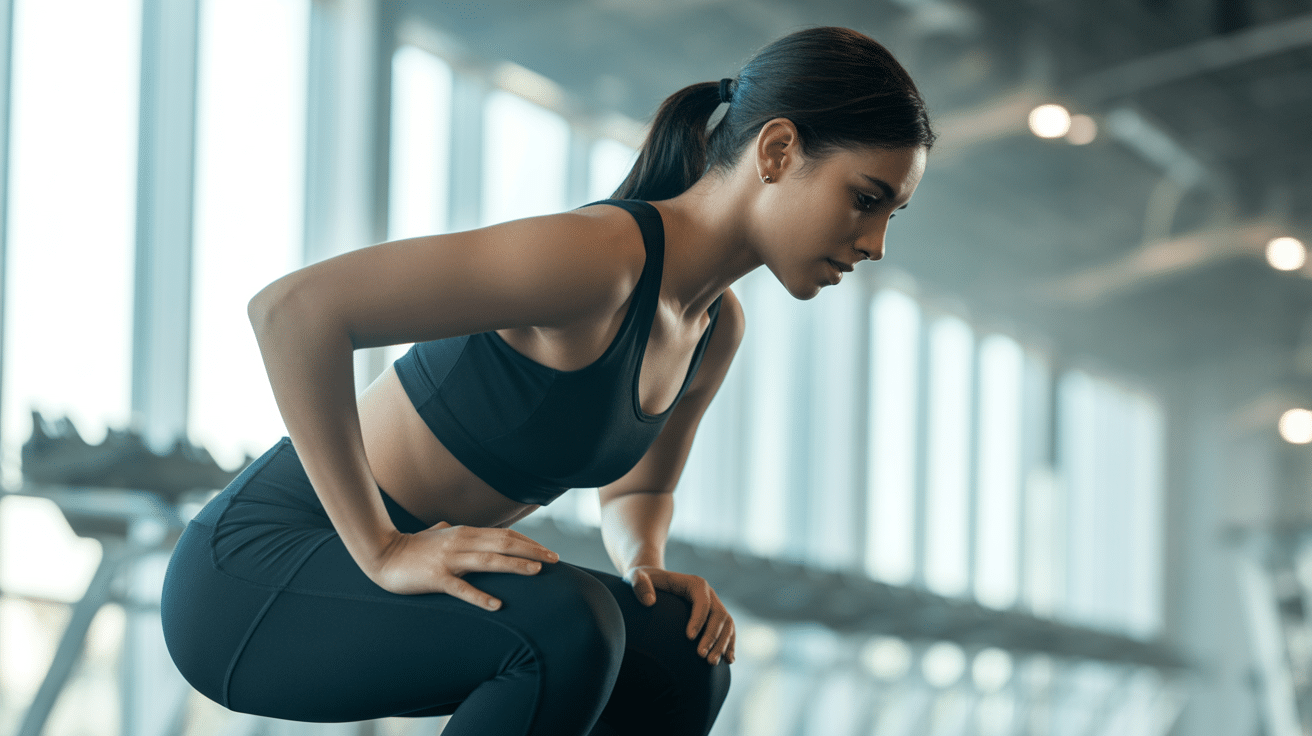Have you ever dropped into a squat and felt that sharp pull in your knees? I know how frustrating it can be when such a simple movement leaves you sore or second-guessing the next rep.
Squats are part of daily life; you do them every time you sit, stand, or pick something off the floor. But for many people, knee pain when squatting turns a natural motion into a struggle.
In this post, I’ll walk you through why it happens, what signs to pay attention to, and simple things you can try to ease the discomfort. My goal is to help you understand your knees better and give you practical steps to move more comfortably.
What Happens When You Squat?
When you squat, your knees bend, hips shift back, and ankles flex to lower and raise your body while maintaining balance. The knee joint connects the thigh bone (femur) to the shin bone (tibia), with the kneecap (patella) at the front.
Smooth cartilage cushions the bone ends, and ligaments such as the ACL, PCL, MCL, and LCL stabilize the joint. Strong tendons link muscles to bones, with the quadriceps, hamstrings, and glutes all working to support movement.
As your knees flex during a squat, the patella glides in its groove, which increases pressure on the cartilage and surrounding tissues. However, your hips and ankles also share the load, and good mobility in these areas spreads forces more evenly, reducing strain on the knee’s ligaments and tendons.
Common Causes of Knee Pain When Squatting
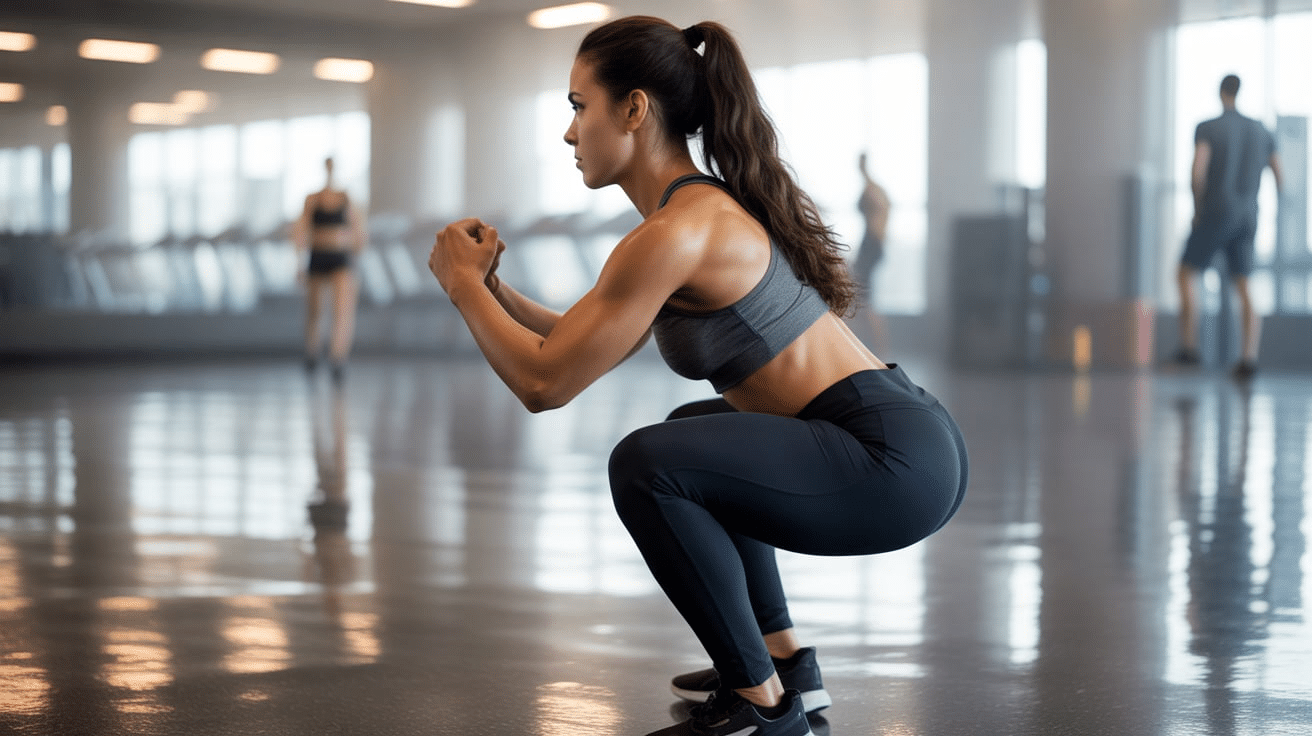
Knee pain during squats often comes from poor form, weak muscles, or existing joint issues. Knowing the cause helps you fix problems early and protect your knees if you’ve been asking yourself Why do my knees hurt when I squat.
1. Poor Technique or Form Faults
One of the most common reasons your knees hurt when squatting is poor technique, such as knees collapsing inward (valgus), which can stress ligaments and soft tissues.
Another is leaning the torso too far forward or shifting weight onto your toes, which increases pressure on the knees.
Squatting either too shallow or too deep for your mobility can also overload tissues. Finally, incorrect foot placement or poor ankle mobility can change knee alignment.
2. Muscle Weaknesses & Imbalances
Weak glutes and hamstrings paired with dominant quads can throw off squat mechanics. Tight calves, hip flexors, and hamstrings may also limit your range of motion and contribute to form faults.
These imbalances make the knee work harder and increase injury risk.
3. Overuse, Overtraining, or Insufficient Recovery
Doing high volumes of squats without proper rest can inflame the knee. Skipping a warm-up or mobility prep before squatting can also make tissues more vulnerable.
Even small technique flaws become problematic with repeated stress.
4. Pre-Existing Conditions & Injuries
Some knee pain isn’t just about form. Conditions like patellofemoral pain syndrome (“runner’s knee”) can flare up during squats.
Meniscus injuries or tears and ligament strains (ACL, PCL, MCL) can also worsen with load. Cartilage damage, osteoarthritis, and tendonitis (like patellar tendonitis) may need medical evaluation.
5. Other Contributing Factors
External factors matter too. Wearing poor footwear or squatting on a hard surface increases stress. Additional load, either from body weight or added weights, raises joint pressure.
Limited hip or ankle mobility also changes squat mechanics and can push more force into the knee.
How to Identify What Type of Pain You Have?
Recognizing how your knee feels during and after squats can reveal the root of the problem.
This table sums up key patterns to watch for:
| Area | Clues | Likely Cause | Worsens | Helps |
|---|---|---|---|---|
| Location | Front/under kneecap; inside; outside | Patellar tendon/cartilage; medial meniscus/MCL; IT band/LCL | Pushing through pain, poor foot placement, heavy load too soon | Rest days, warm-up, stance adjustment, lighter weight |
| Timing | During descent, during ascent, after workout | Kneecap compression/ankle limit; patellar tracking/muscle control; overuse/inflammation | Skipping mobility, ignoring swelling | Reduce volume, ice, and gentle mobility |
| Other Signs | Swelling, clicking/popping, locking/giving way | Inflammation or tissue damage, cartilage or meniscus issues, or a possible ligament tear | Ignoring symptoms | Ice, elevation, professional check |
Note: If your pain fits multiple patterns or persists beyond a week despite rest and adjustments, stop guessing and see a professional. Catching structural damage early prevents minor issues from becoming chronic problems that sideline you for months.
Exercises to Reduce Pain and Build Capacity
Strength and mobility work give your knees the support they need for squats. The goal is to start simple, stay consistent, and progress slowly.
1. Knee Extensions
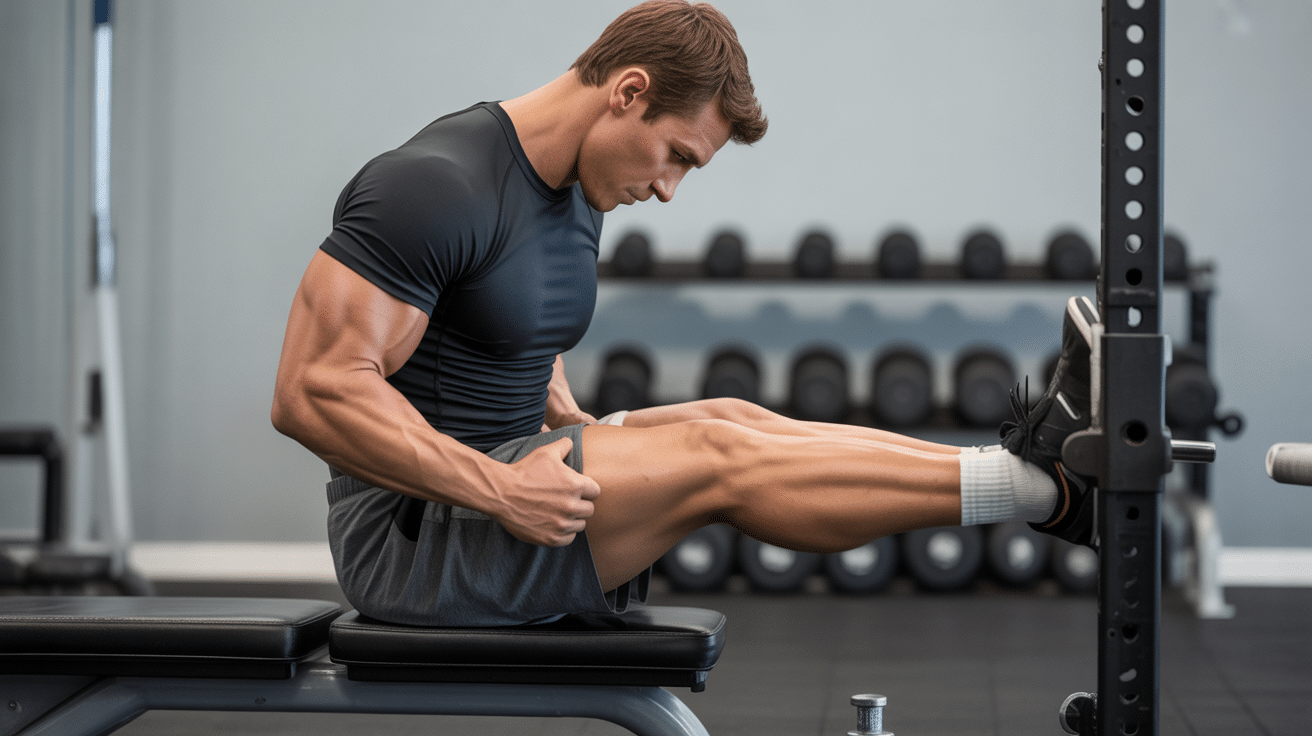
Knee extensions are a safe way to isolate and strengthen the quadriceps, which are the main stabilizers of your knee joint. Sit in a chair or on a bench with your feet flat, then slowly extend one leg until it’s straight.
Hold briefly at the top before lowering back down with control. You can add a resistance band or light ankle weight as you get stronger. Aim for 2–3 sets of 10–15 reps per leg.
2. Sit-To-Stand Squats
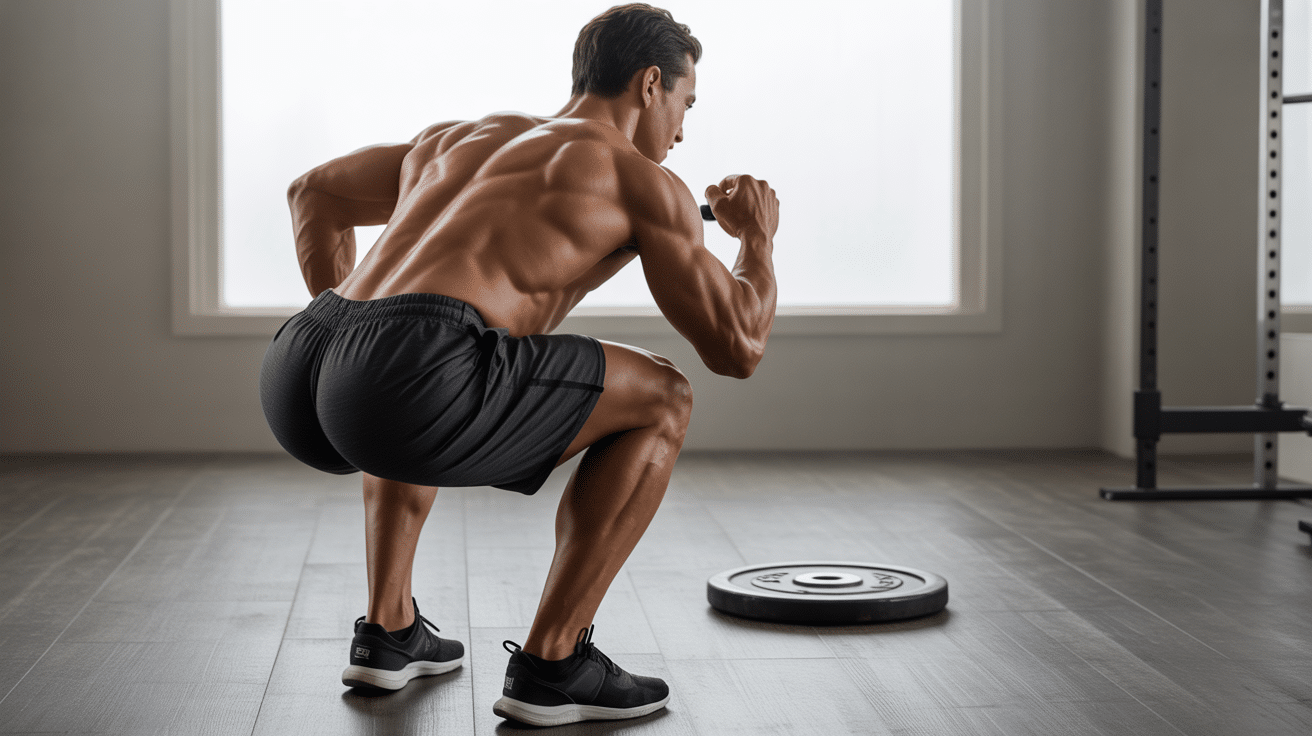
This exercise mimics the squat movement but keeps it simple and accessible. Sit down on a chair or box with your feet hip-width apart, then stand up by driving through your heels and squeezing your glutes.
Lower back down slowly and repeat. Sit-to-stands help reinforce safe squat mechanics and reduce strain on the knees while still building strength. Start with 3 sets of 8–12 reps.
3. Wall Squat Holds
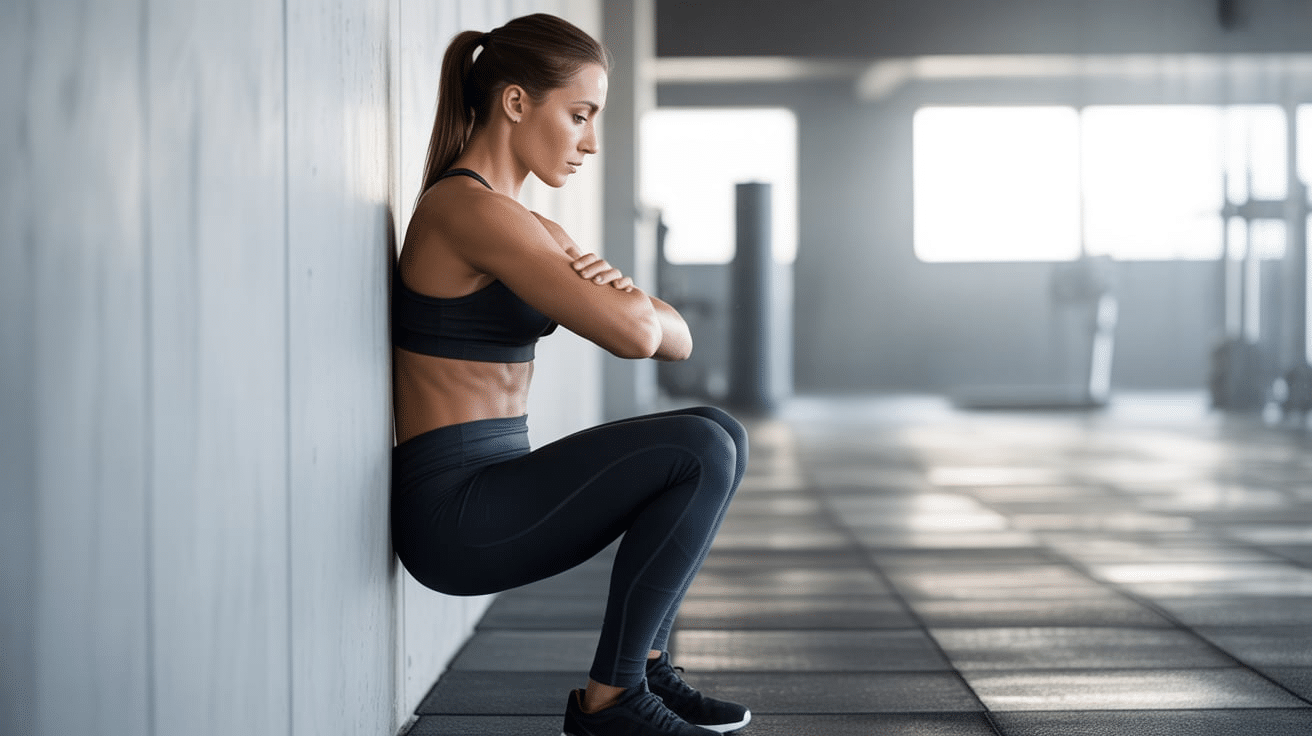
Wall squat holds strengthen your quads and improve muscular endurance without requiring deep movement. Stand with your back against a wall, feet about 18 inches forward, then slide down into a partial squat.
Keep your knees stacked over your heels and hold the position for 20–45 seconds. Repeat for 3 rounds. This static hold helps improve control while reducing unnecessary knee stress.
4. Glute Bridges
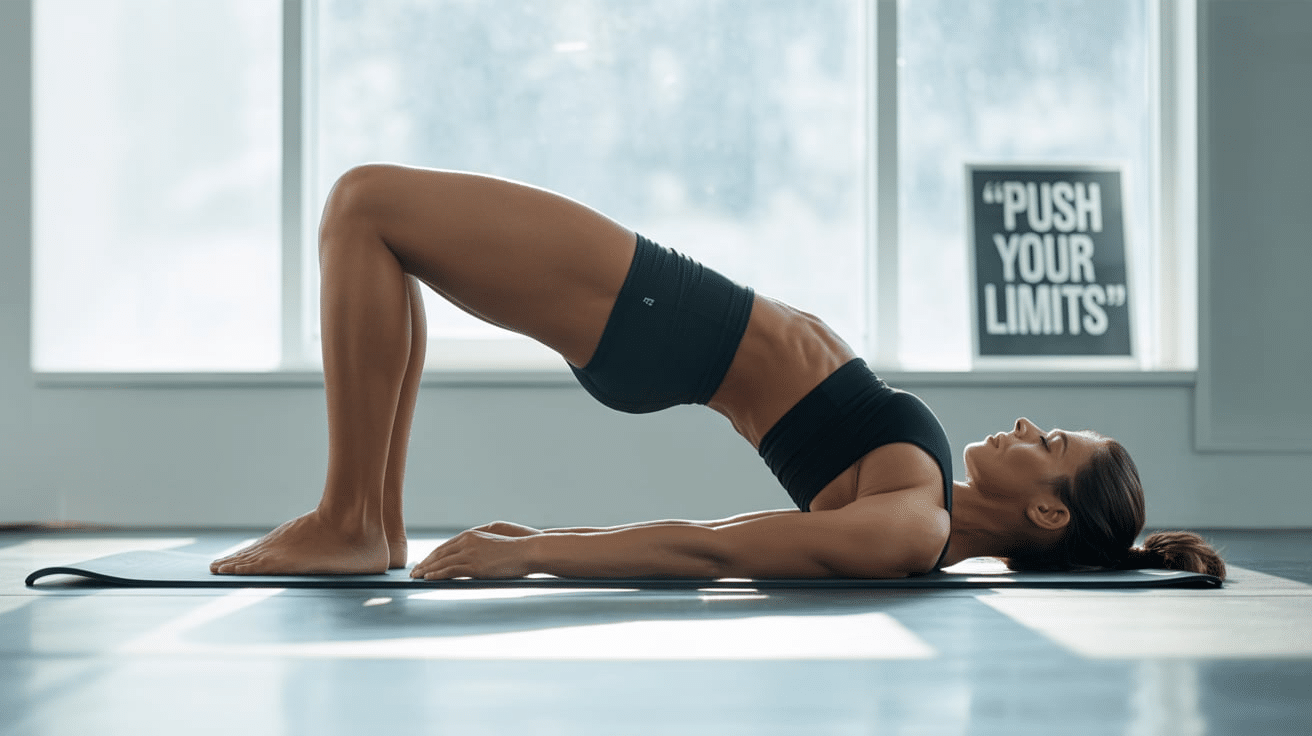
Glute bridges target your gluteal muscles, which play a key role in stabilizing the knee joint. Lie on your back with knees bent and feet flat on the ground.
Press through your heels to lift your hips toward the ceiling, then squeeze your glutes at the top before lowering slowly. Do 3 sets of 10–15 reps. Strong glutes take pressure off the knees during squatting and improve overall stability.
5. Clamshells or Banded Side Steps

These hip-strengthening moves help prevent the knees from collapsing inward during squats. For clamshells, lie on your side with knees bent and feet together, then lift your top knee while keeping your feet touching.
For banded side steps, place a band around your thighs and take controlled steps sideways. Perform 2–3 sets of 12–15 reps per side. Both exercises build hip and glute strength that protects the knees.
6. Ankle Mobility Drills
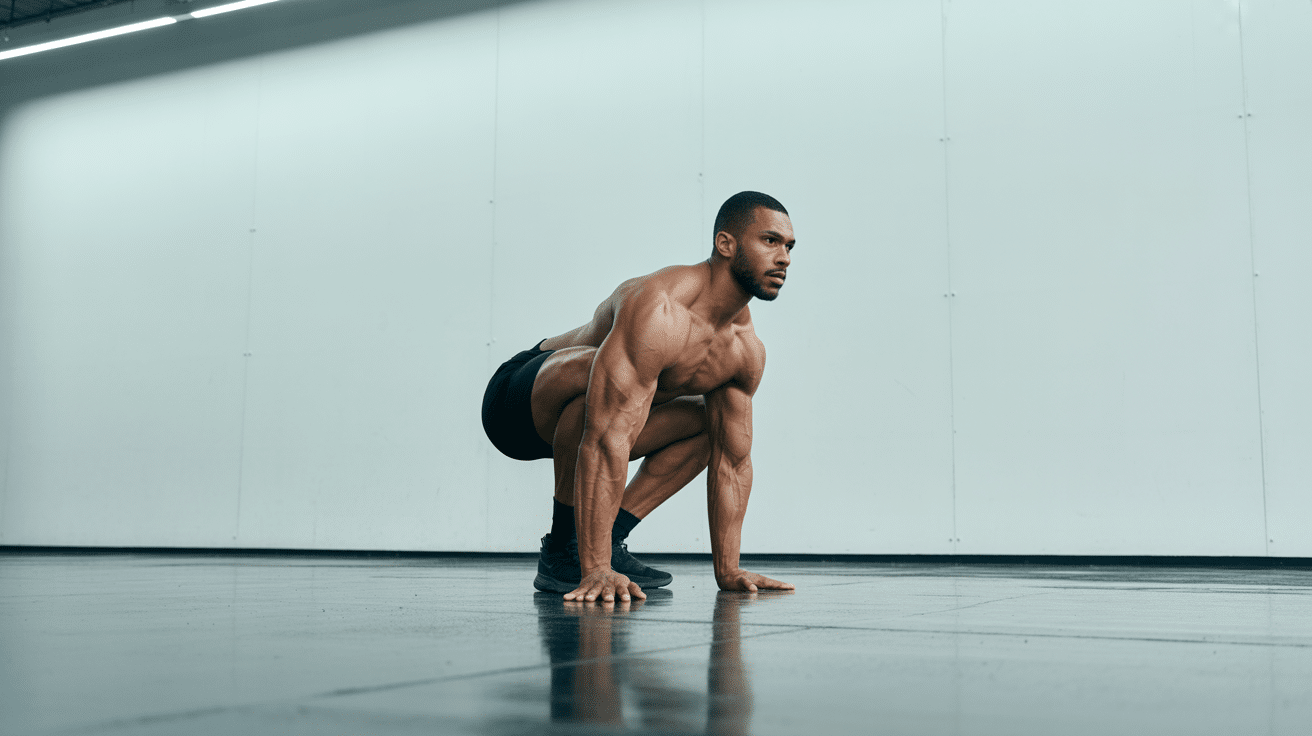
Limited ankle movement often forces the knees into poor positions during squats. A simple drill is the knee-to-wall stretch: stand facing a wall, place your toes a few inches away, and drive your knee toward the wall without lifting your heel.
Perform 2–3 sets of 10–15 reps per side. Better ankle flexibility improves squat depth and alignment, reducing stress on your knees.
7. Slant-Board or Eccentric Squats
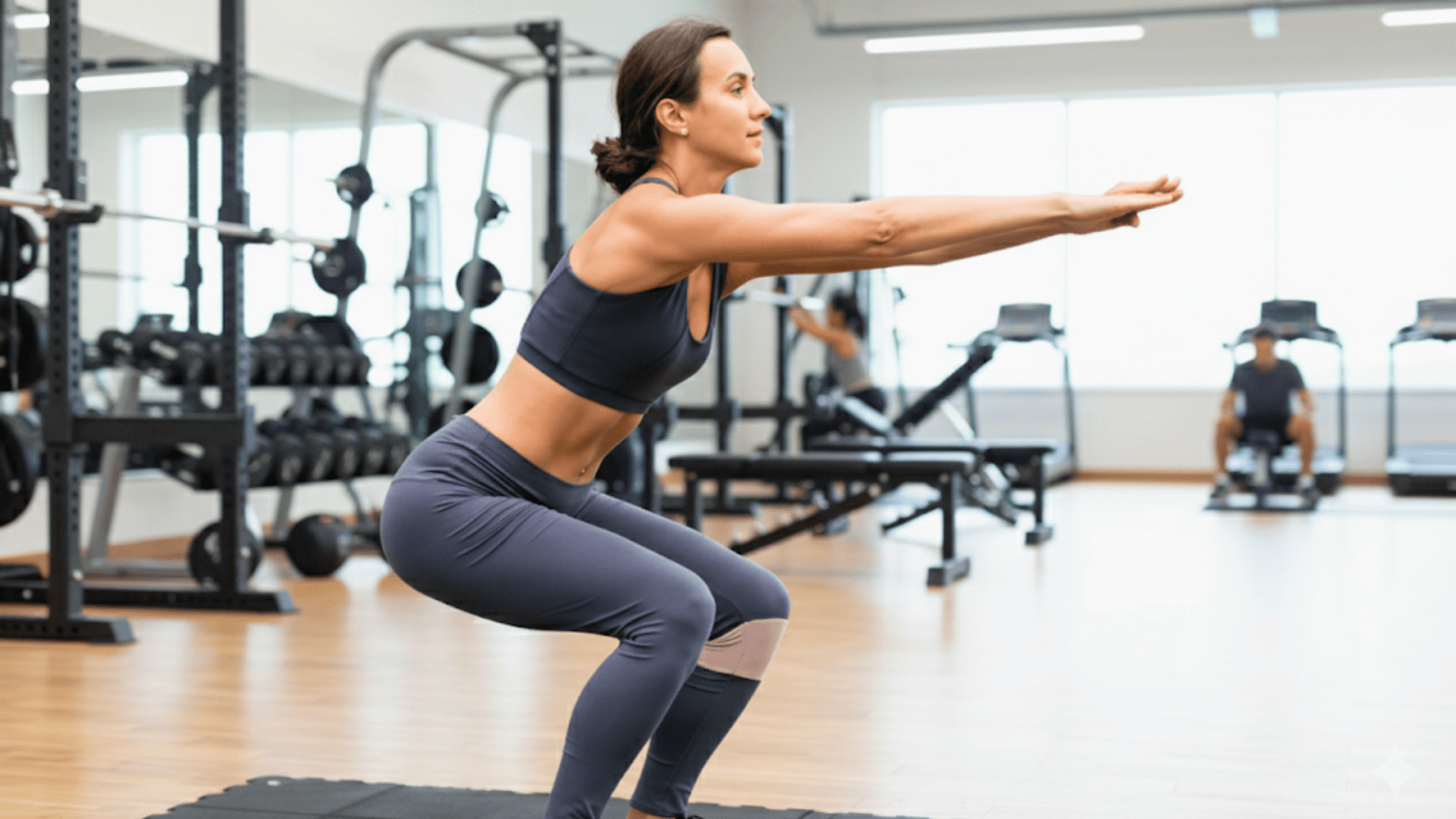
This variation is especially useful for patellar tendon pain. Stand on a slant board or small incline with heels raised. Lower into a squat slowly over 3–5 seconds, focusing on control, then use support from your arms or the other leg to return to standing.
Begin with 3 sets of 6–8 reps. Slow eccentric work strengthens tendons and helps them adapt to load without irritation.
These exercises strengthen supporting muscles, improve mobility, and build control; key ingredients for reducing knee pain when squatting.
Knee Load Management and Home Care
Ease knee stress by lowering squat depth or weight instead of stopping completely. Use ice after workouts for inflammation, and heat before activity if stiffness is the main issue.
Supportive shoes can help, and safe over-the-counter pain relief may provide comfort. Progress slowly; adjust only one factor each week, like depth, reps, or resistance, to avoid overloading your knees.
Prevention Tips
- Warm up before exercise, especially the hips, knees, and ankles.
- Strength train your legs and hips consistently.
- Avoid sudden jumps in workout volume or intensity.
- Take short movement breaks if you sit most of the day.
- Use proper footwear and consider knee pads if your work requires kneeling.
Diagnosis: What Professionals Might Do
If your knee pain continues despite good form and rest, getting checked can show what’s really causing it. Here’s what you can expect when you see a professional:
- Physical Exam & History Taking: The clinician asks about your pain and checks the knee for swelling or instability.
- Movement Observation: They watch your squat form and activity habits to spot possible causes.
- Mobility & Strength Testing: Flexibility and strength in your hips, knees, and ankles are tested for imbalances.
- Imaging (X-Ray, MRI): X-rays show bone issues; MRIs reveal soft tissue damage.
- Referral to Specialists: You may be sent to a physiotherapist or orthopedist for further care.
- Sports Medicine Coordination: Specialists manage complex cases and coordinate your treatment plan.
Seeing a professional early helps prevent more damage and gives you a clear plan to return to squatting safely.
Summing Up
Knee pain during squats is frustrating, but it’s usually fixable with the right approach. Understanding the common causes, from form issues to muscle imbalances, helps you pinpoint what’s going wrong and make practical adjustments.
Focus on correcting your form, improving mobility, and strengthening the muscles supporting your knees. Most see improvement in a few weeks when addressing the root cause, not just pushing through pain.
That said, if your pain persists beyond two weeks, worsens with rest, or comes with swelling, clicking, or instability, don’t ignore it. See a physical therapist or sports medicine doctor to rule out structural damage early.
I hope this guide gives you a clear path forward. For more advice on training smart and staying injury-free, check out my other posts on movement and strength.

